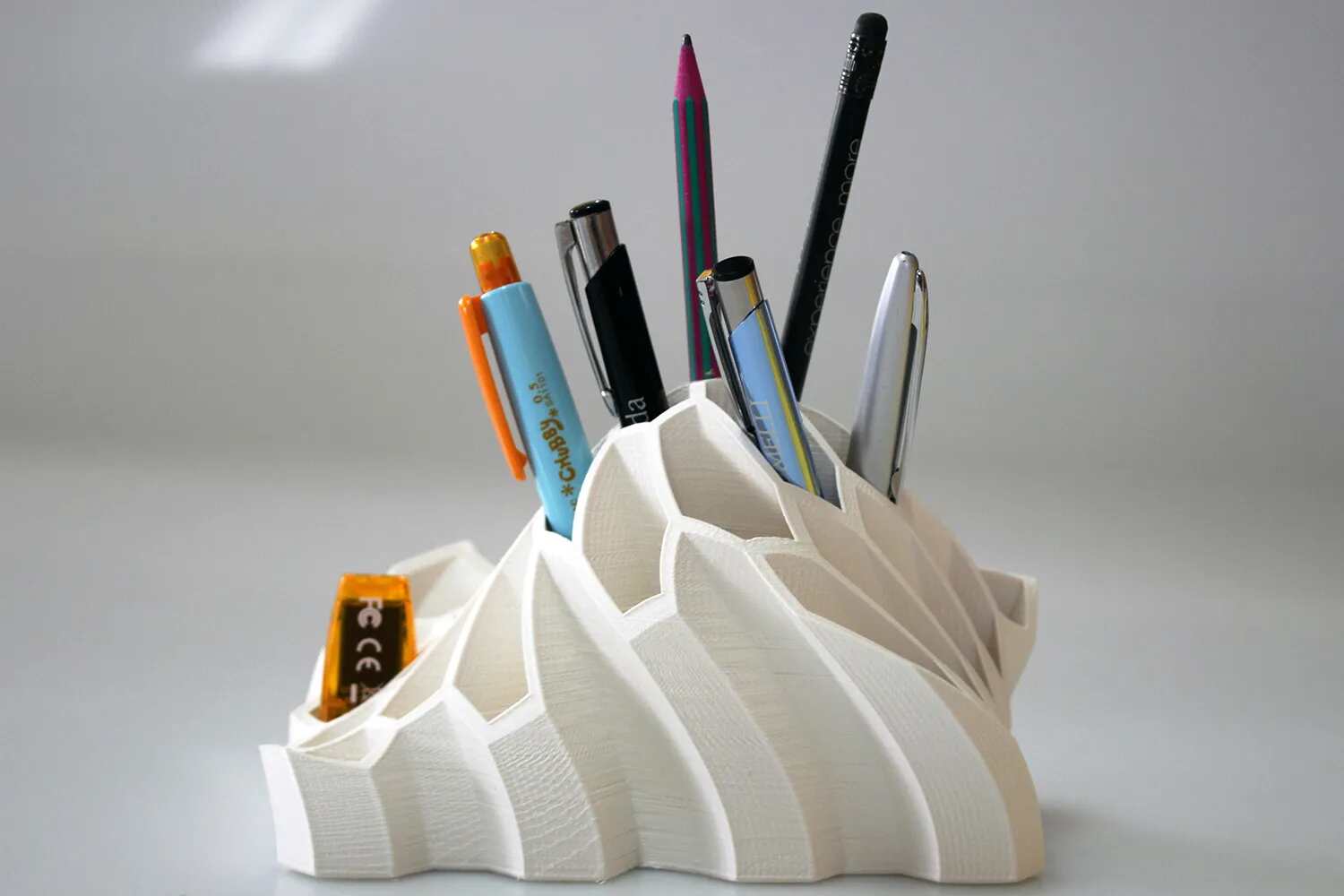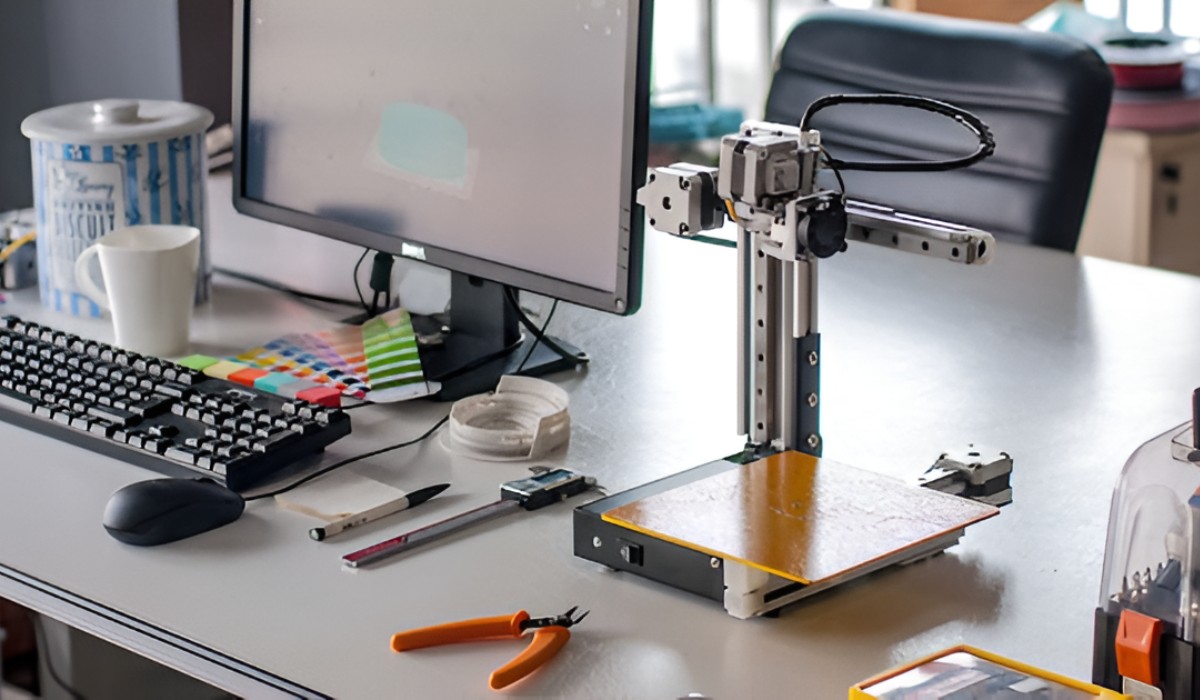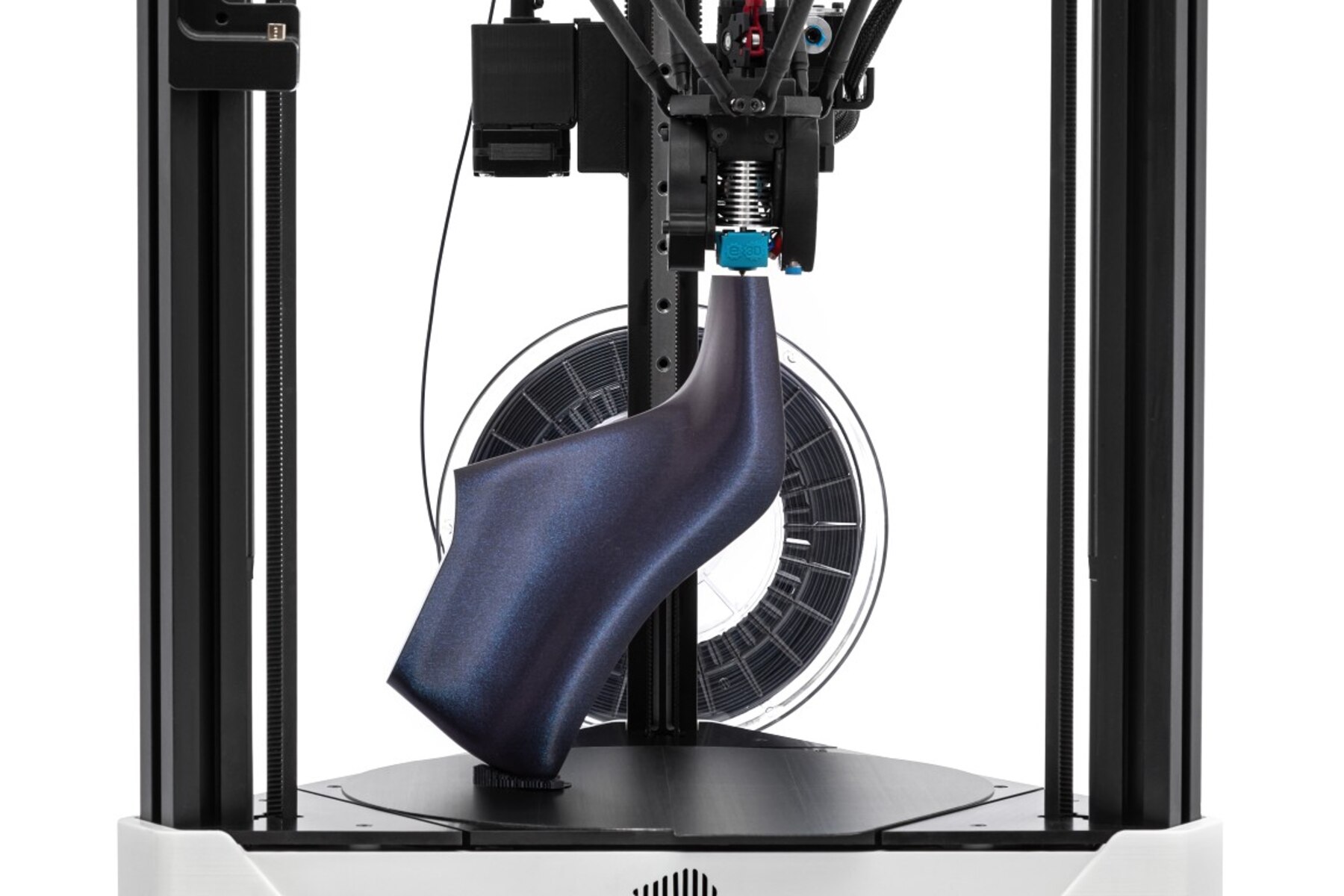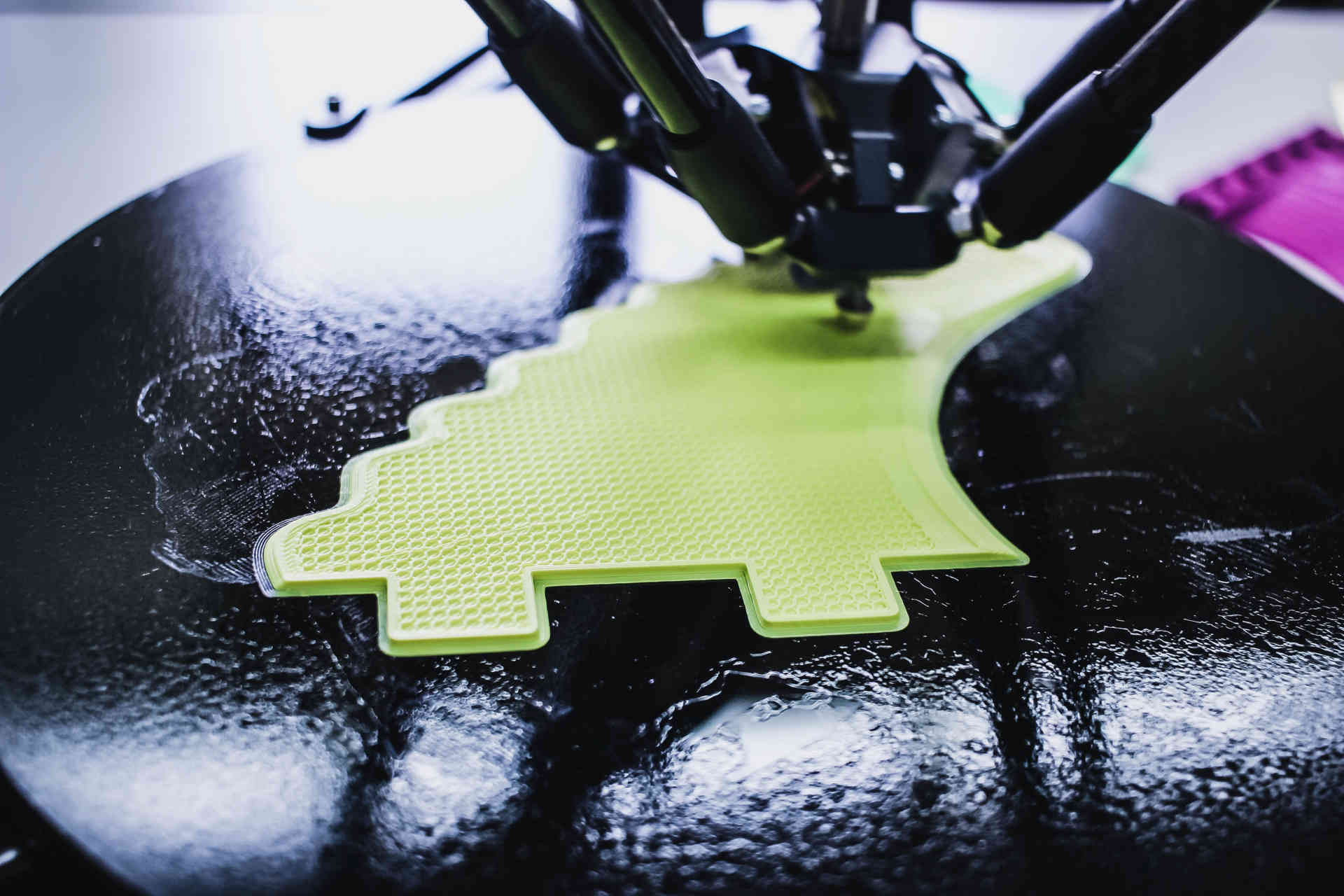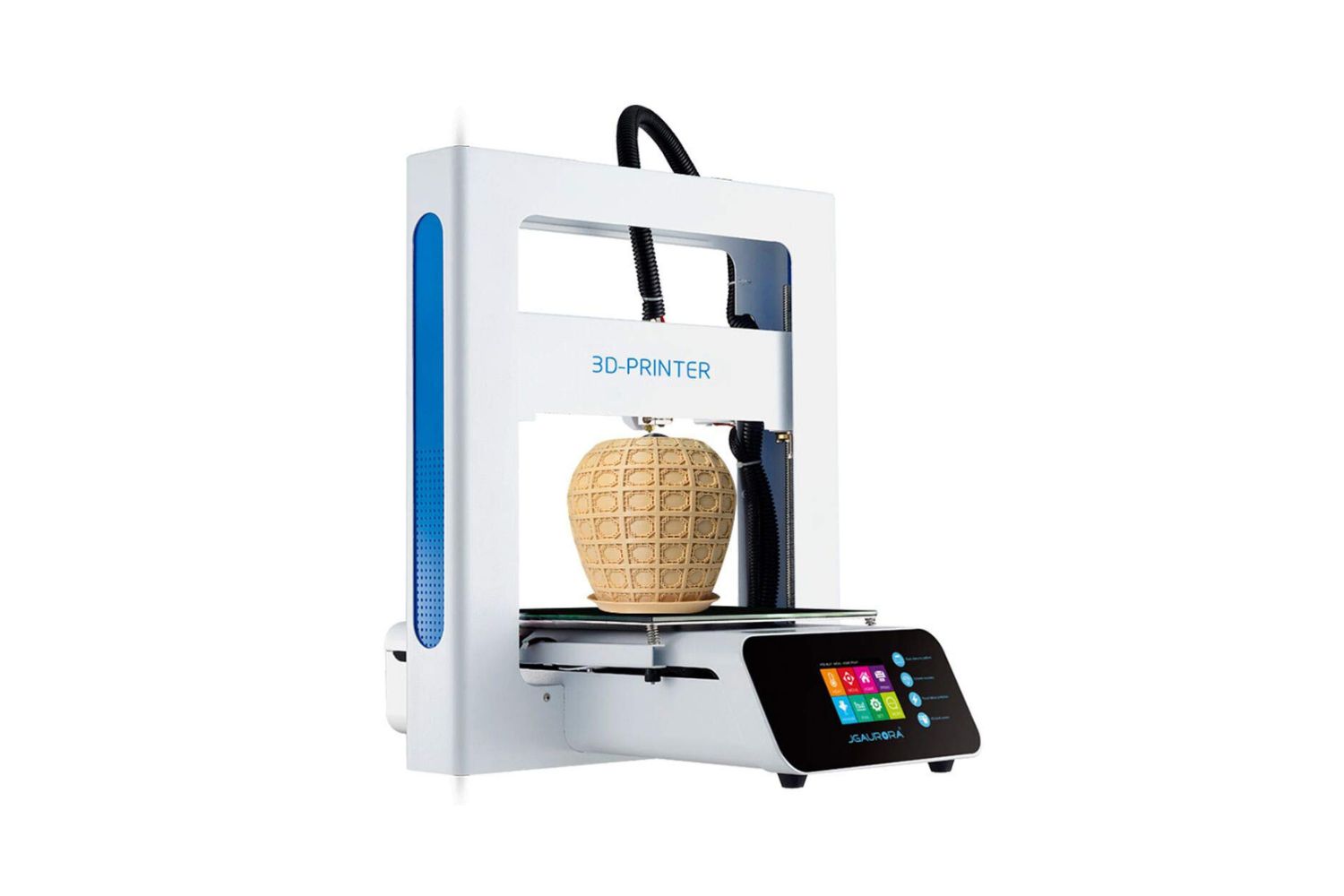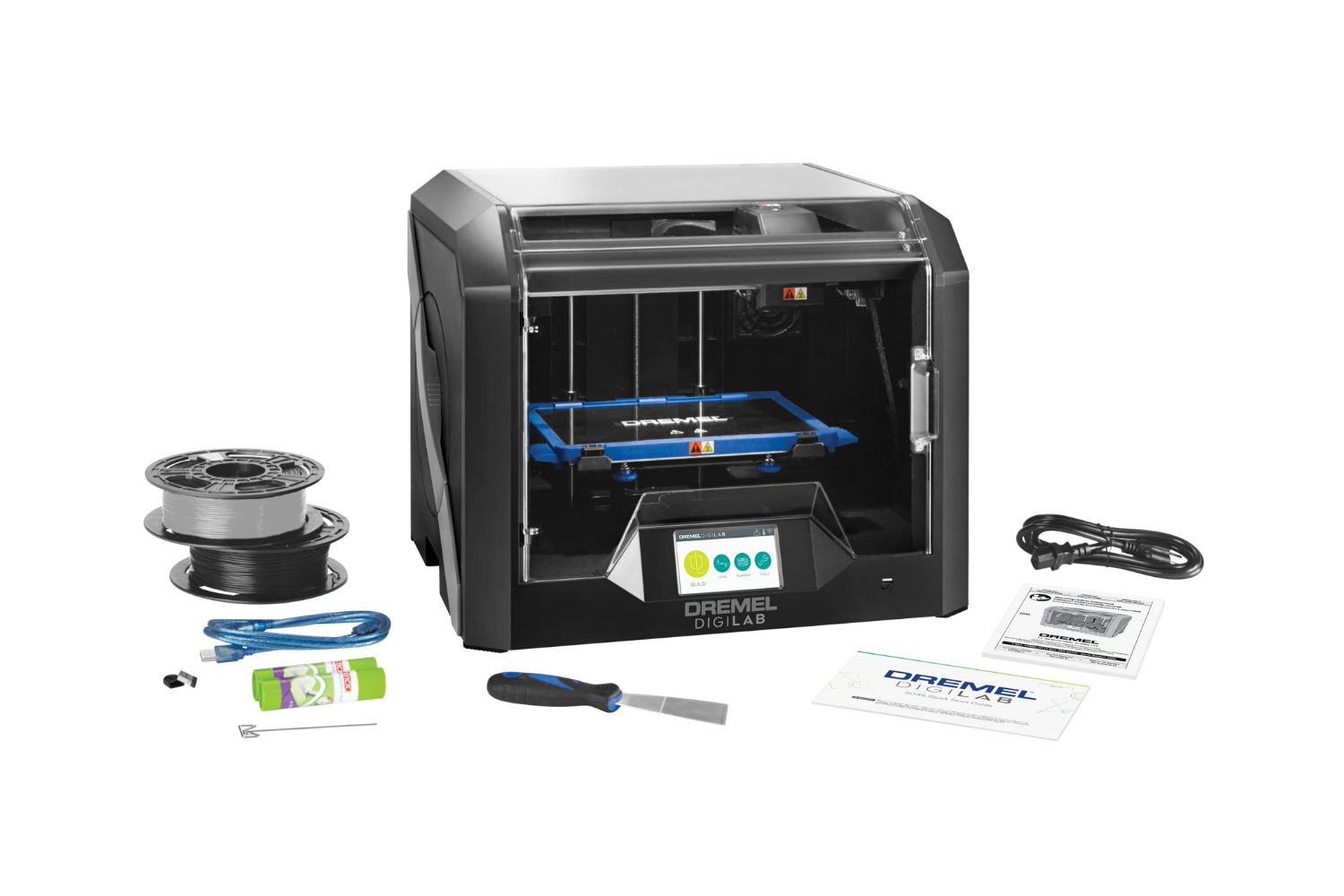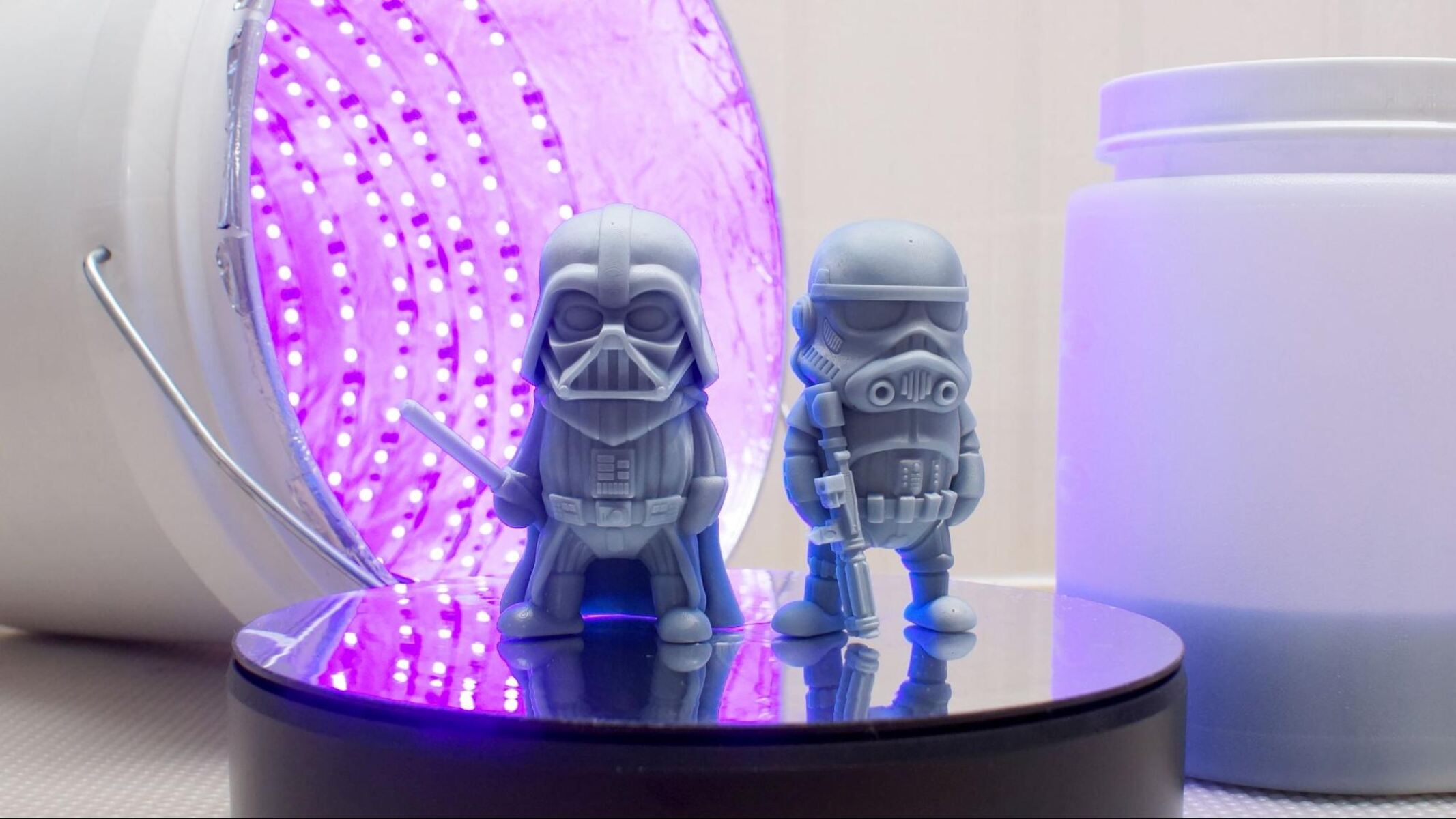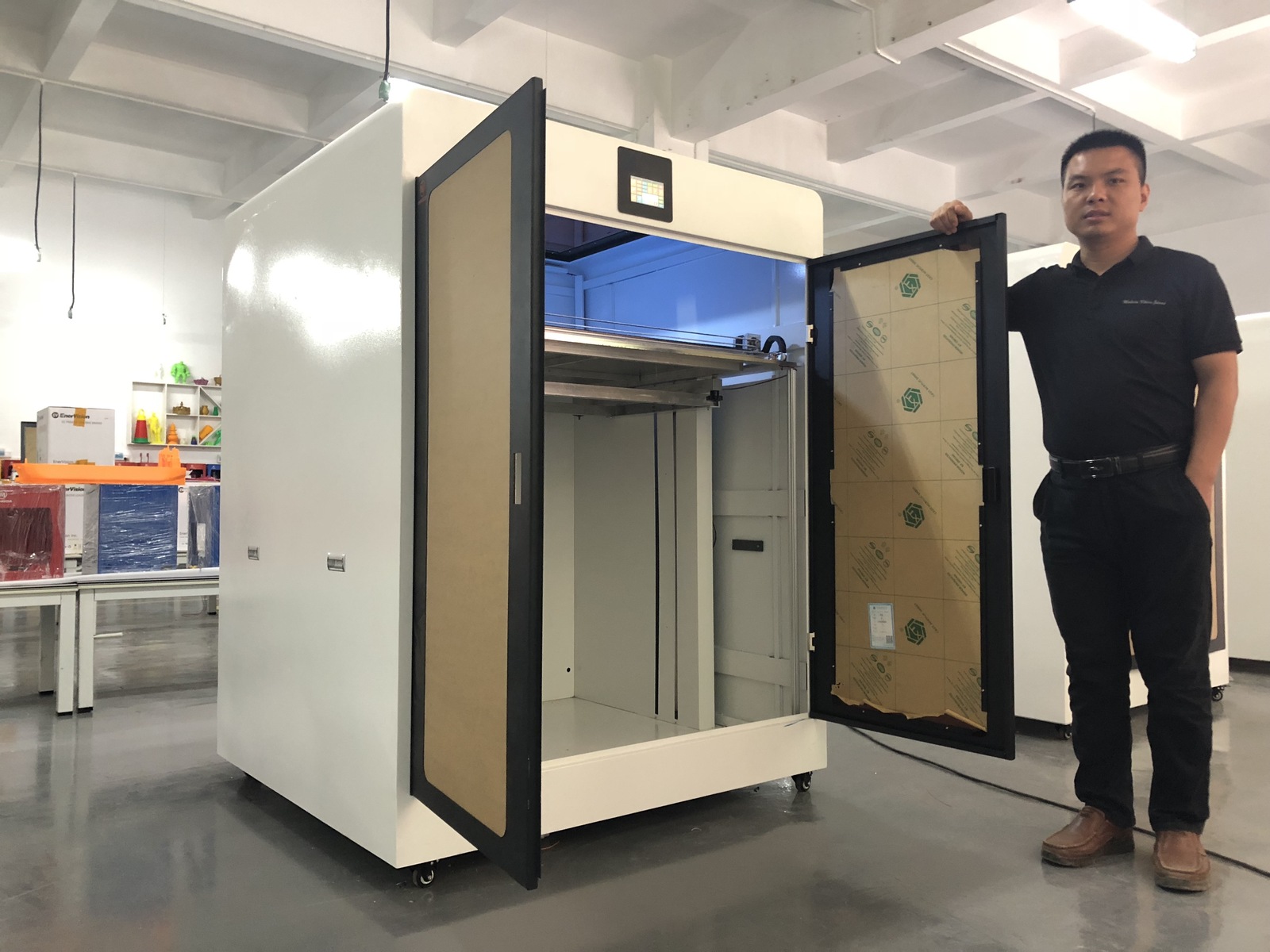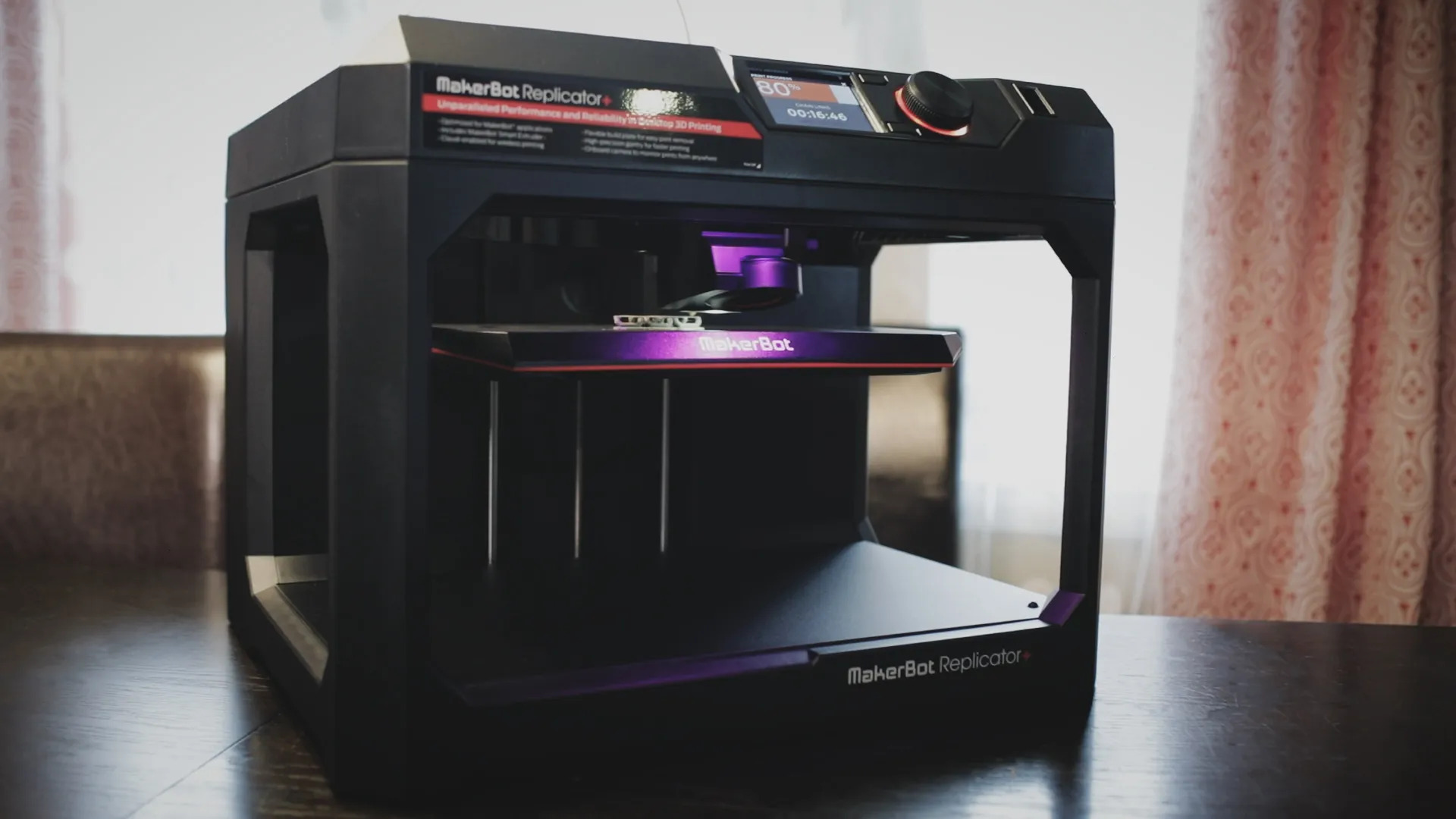Introduction
With the rapid advancement of technology, 3D printers have become an increasingly popular tool that opens up a world of possibilities. No longer confined to industrial use, 3D printers are now accessible to individuals and businesses alike, allowing us to bring our creative ideas to life. But what exactly can you make with a 3D printer?
The answer is almost limitless. From small trinkets to functional objects, 3D printers have revolutionized the way we create and manufacture. Whether you’re a hobbyist, an artist, an entrepreneur, or someone looking to explore the endless possibilities, owning a 3D printer can unlock a whole new realm of creativity.
In this article, we will explore the wide range of objects that can be made with a 3D printer. From toys and figurines to home decor, from tools to fashion accessories, the list is diverse and exciting. So, let’s dive in and discover the remarkable things you can create using this cutting-edge technology.
Toys and Figurines
One of the most popular uses of 3D printers is the creation of toys and figurines. With a 3D printer, you can design and produce your own unique action figures, dolls, and playsets. The possibilities are endless when it comes to creating toys that match your imagination.
Not only can you customize the appearance of the toys, but you can also experiment with different materials and textures. From flexible rubber toys to rigid plastic figures, the versatility of a 3D printer allows you to bring your favorite characters to life.
Furthermore, 3D printing enables you to recreate intricate details that may not be possible with traditional manufacturing methods. You can add intricate patterns, textures, and designs to make your toys or figurines stand out from the crowd.
There are even online platforms where you can find and download 3D models of popular characters and toys. These models can be easily modified and personalized to suit your preferences. Whether you’re a fan of superheroes, cartoon characters, or even historical figures, 3D printing gives you the opportunity to have a unique collection that reflects your interests.
In addition to ready-made designs, you can also unleash your creativity by designing your own toys and figurines from scratch. With the help of 3D modeling software, you can bring your ideas to life and create one-of-a-kind toys that are truly a reflection of your artistic vision.
From simple toy blocks to complex robotic figures, 3D printing allows you to explore your imagination and make toys that are tailored to your liking. Whether you’re creating toys for yourself, your children, or to sell, a 3D printer can be your gateway to a world of endless playtime possibilities.
Home Decor and Accessories
3D printing has transformed the way we decorate our living spaces. With a 3D printer, you can create unique and personalized home decor items and accessories that add a touch of style and individuality to any room.
One popular application of 3D printing in home decor is the creation of decorative vases and planters. From geometric shapes to intricate designs, 3D printers allow you to produce stunning pieces that can make your plants truly stand out. You can even experiment with different materials, colors, and textures to match your interior design aesthetic.
Another area where 3D printing shines is in the production of lighting fixtures. Whether you’re looking for a statement pendant lamp or a custom-designed lampshade, a 3D printer can bring your ideas to life. With the ability to create complex shapes and patterns, you can design lighting fixtures that not only illuminate your space but also serve as artistic focal points.
Additionally, 3D printing can be used to create functional home accessories such as wall hooks, key holders, and decorative storage containers. These items can be customized to match your personal style and serve as both practical and visually appealing additions to your home.
One of the advantages of 3D printing in the realm of home decor is the ability to create unique and personalized items. You can design and print custom photo frames, wall art, and even personalized nameplates. This allows you to create truly meaningful pieces that add a personal touch to your home.
Furthermore, 3D printing opens up possibilities for creating intricate and detailed sculptures and art pieces for display in your home. Whether you’re interested in abstract designs or replicas of famous artwork, a 3D printer can bring your artistic visions to life.
With the freedom to design and produce your own home decor and accessories, 3D printing offers a world of creative opportunities to elevate your living space and make it truly unique.
DIY Tools and Gadgets
3D printing has revolutionized the world of do-it-yourself (DIY) projects by making it easier than ever to create custom tools and gadgets. With a 3D printer, you can design and manufacture your own unique and specialized tools that cater to your specific needs.
One of the key advantages of 3D printing in this context is the ability to create complex shapes and structures that may not be easily achievable with traditional manufacturing methods. This opens up opportunities to design tools and gadgets with intricate and functional features.
From custom phone holders and cable organizers to specialized kitchen utensils and woodworking jigs, 3D printing allows you to create practical and innovative solutions tailored to your unique requirements. Whether you’re a maker, a hobbyist, or a professional in a specific field, a 3D printer can empower you to craft tools that improve efficiency and enhance your creative endeavors.
Furthermore, 3D printing can be utilized to repair or replace broken parts of various objects and appliances. Instead of spending time and money searching for replacement parts, you can simply 3D print them. This not only saves you money but also reduces waste by promoting a more sustainable approach to repair and maintenance.
For those interested in electronics and robotics, 3D printing opens up new possibilities for creating custom enclosures and cases for your projects. You can design and print modular components that perfectly fit your circuit boards and components, giving your creations a professional and polished appearance.
DIY enthusiasts can also use 3D printing to build custom brackets, clamps, and holders for organizing their tools and workspace. This helps optimize efficiency and makes it easier to access and utilize your tools in various creative projects.
Additionally, 3D printing enables the creation of personalized and unique gadgets, such as smartphone stands, headphone holders, and even custom-designed drones. This allows you to inject your own style and functionality into everyday devices, reflecting your individuality and innovation.
Whether you’re a DIY enthusiast, a hobbyist, or someone who loves to tinker and create, a 3D printer can be a valuable tool that empowers you to design and produce your own personalized tools and gadgets for various purposes.
Fashion and Jewelry
3D printing has revolutionized the world of fashion and jewelry, offering designers and individuals the ability to create truly unique and personalized pieces. With a 3D printer, you can bring your creative visions to life and produce fashion-forward accessories and jewelry that stand out from the crowd.
One of the key advantages of 3D printing in this field is the freedom to experiment with intricate and complex designs. Traditional manufacturing methods may have limitations, but 3D printing allows for the creation of intricate patterns, textures, and shapes that can’t be easily achieved through traditional means.
From statement necklaces and earrings to avant-garde bracelets and rings, 3D printing opens up new avenues for design in the world of wearable art. You can customize every aspect of your creations, from the materials used to the color and finish, resulting in pieces that are truly unique and reflective of your personal style.
Moreover, 3D printing allows for the production of custom-fit jewelry. By scanning body measurements or using digital design software, you can create rings, bracelets, and other accessories that fit perfectly, resulting in comfortable and wearable pieces.
3D printers also make it easier to experiment with different materials and finishes for fashion and jewelry. You can print objects using a range of materials, including plastic, metal, and even flexible materials like rubber or fabric. This opens up opportunities to create unique textures, shapes, and combinations that add depth and visual interest to your designs.
With 3D printing, designers and jewelry enthusiasts can push the boundaries of traditional fashion and jewelry design. You can create futuristic and artistic pieces that challenge conventions and redefine what is possible in the world of fashion.
Additionally, 3D printing enables the creation of intricate and personalized accessories such as hair clips, brooches, and belt buckles. These small details can add an extra touch of style and individuality to any outfit.
Whether you’re a fashion designer looking to push the boundaries of your creativity or someone who wants to wear unique and personalized jewelry, a 3D printer can be a game-changer in the fashion industry, allowing you to produce wearable art that is as individual as you are.
Prototypes and Customized Objects
One of the most practical and valuable applications of 3D printing is the creation of prototypes and customized objects. Whether you’re an inventor, a product designer, or someone who loves to personalize everyday items, a 3D printer can bring your ideas to life quickly and efficiently.
Prototyping is a crucial step in the product development process, allowing creators to test and refine their designs before moving forward with full-scale production. With 3D printing, you can rapidly produce prototypes, making it easier to iterate and make design improvements. This not only saves time and money but also helps bring products to market faster.
Customization is another key advantage of 3D printing. With traditional manufacturing methods, customization can be expensive and time-consuming. However, 3D printing allows for easy and cost-effective personalization of objects. Whether it’s engraving names on personalized gifts or creating tailor-made smartphone cases, 3D printing enables you to create one-of-a-kind objects that reflect individual preferences and tastes.
Additive manufacturing techniques, such as 3D printing, also allow for the creation of objects with complex geometries and internal structures that may not be feasible with other manufacturing methods. This opens up possibilities for designing innovative and functional objects that fulfill specific requirements. From intricate architectural models to unique household gadgets, 3D printing enables the production of customized objects that meet precise specifications.
Furthermore, 3D printing can be utilized to restore and replicate obsolete or hard-to-find parts. Whether it’s for vintage cars or rare collectibles, 3D printing allows for the recreation of parts that are no longer available. This helps prolong the lifespan of cherished items and reduces the need for costly replacements or repairs.
Additionally, 3D printing has made it easier to create personalized prosthetic limbs, orthotic devices, and other medical aids. Patients can benefit from custom-fitted and functional solutions that improve mobility and quality of life. This customization also extends to other industries, such as dentistry, where 3D printing is used to create dental implants and orthodontic aligners.
Whether it’s for prototyping, customization, or creating unique and specialized objects, 3D printing offers a versatile and efficient solution that empowers individuals and businesses to bring their ideas to life.
Educational Resources
3D printing has had a significant impact on the field of education, providing valuable resources and tools that enhance learning experiences. From elementary schools to universities, 3D printers have become an essential part of educational curriculums, promoting creativity, problem-solving skills, and hands-on learning.
One of the key benefits of 3D printing in education is its ability to make abstract concepts more tangible and accessible. Students can see and touch physical models of complex structures, molecules, and mathematical concepts, helping them grasp the subject matter more effectively. This hands-on approach enhances understanding and engagement, making learning more interactive and enjoyable.
3D printing also encourages design thinking and innovation in the classroom. Students can explore their creativity by designing and producing their own prototypes and models. Whether it’s for science experiments, engineering projects, or artistic endeavors, 3D printing provides a practical avenue for turning ideas into reality.
Moreover, 3D printing can be integrated into various disciplines, including science, technology, engineering, arts, and mathematics (STEAM). Students can apply concepts from different subjects to design and create functional objects. For example, they can build geometric shapes, architectural models, or even robotic devices.
Another significant advantage of 3D printing is the wide range of educational resources available. Many online platforms offer free or affordable 3D models, lesson plans, and project ideas that teachers can use to enhance their curriculum. This allows educators to introduce 3D printing technology into their classrooms, even if they don’t have extensive knowledge or experience with it.
Furthermore, 3D printing fosters collaboration and teamwork among students. They can work together to brainstorm ideas, design models, and troubleshoot issues, promoting communication and critical thinking skills. This collaborative environment mirrors real-world situations and prepares students for future careers where teamwork is essential.
Additionally, 3D printing helps develop problem-solving skills. Students face challenges and obstacles when designing and printing their objects, forcing them to think creatively and find solutions to overcome these obstacles. This encourages resilience and a growth mindset, traits that are valuable in academic and professional settings.
Whether it’s for science projects, art classes, or technology education, 3D printing offers an innovative and engaging method of instruction. It equips students with the skills they need to thrive in the digital age, fostering creativity, critical thinking, and technological literacy.
Medical and Dental Applications
The field of medicine and dentistry has greatly benefited from the advancements in 3D printing technology. From medical devices to prosthetics and surgical models, 3D printing has revolutionized patient care and treatment options.
One of the significant advantages of 3D printing in the medical field is the ability to create patient-specific models and surgical guides. Surgeons can use 3D-printed anatomical models to better understand complex cases, plan surgeries, and simulate procedures before operating on patients. This helps improve surgical outcomes, reduce complications, and enhance patient safety.
Furthermore, 3D printing enables the production of custom-made medical implants and prosthetics. Whether it’s orthopedic implants or patient-specific prosthetic limbs, 3D printing allows for precise and personalized solutions. These implants and prosthetics can be tailored to fit each patient’s unique anatomy, resulting in better comfort, functionality, and overall quality of life.
In dentistry, 3D printing has transformed the way dental appliances are created. Dentists can produce custom-made dental crowns, bridges, and aligners using 3D printing technology. This allows for a quicker and more precise manufacturing process, reducing the need for multiple appointments and temporary restorations.
Additionally, 3D printing has provided a solution for individuals who suffer from sleep apnea. Continuous Positive Airway Pressure (CPAP) masks, which are used to treat sleep apnea, can be 3D printed to provide a more comfortable and personalized fit for patients, improving compliance and treatment effectiveness.
Another area where 3D printing is making strides is in the production of bioprinted tissues and organs. Although still in its early stages, researchers are exploring the potential of 3D printing living human tissues and organs for transplantation. This groundbreaking technology has the potential to revolutionize organ transplantation, reducing waiting times and dependency on donor organs.
Beyond patient care, 3D printing is also used in medical training and education. Medical and dental students can practice surgical procedures and obtain hands-on experience using lifelike 3D-printed models. This offers a safe and realistic environment for trainees to develop their skills and enhance their learning.
Overall, 3D printing is transforming the medical and dental fields, offering personalized solutions, improving patient outcomes, and advancing the future of healthcare. With continued advancements in technology, we can expect even more breakthroughs that will shape the way we approach medical and dental treatments.
Food and Culinary Creations
3D printing has revolutionized the world of food and culinary arts, offering unique and creative possibilities for chefs, food enthusiasts, and even home cooks. With a 3D printer, you can transform ordinary ingredients into intricate and visually stunning culinary creations.
One of the key advantages of 3D printing in the culinary field is the ability to create complex and intricate shapes that are difficult to achieve through traditional culinary techniques. Chefs can design and print edible decorations, intricate chocolate sculptures, and even intricate sugar art that adds a touch of artistry to their dishes.
Furthermore, 3D printing enables the customization of food items to match individual preferences and dietary needs. Whether it’s personalizing textured food for individuals with difficulty swallowing or creating personalized chocolate designs as gifts, 3D printing allows for the production of food that is tailored to specific requirements.
With 3D printing, chefs and food enthusiasts have the flexibility to experiment with different flavors and ingredients. They can create unique food combinations and textures by layering and shaping diverse ingredients. This opens up opportunities for innovative taste experiences that blend traditional flavors with modern techniques.
Moreover, 3D printing is used to replicate intricate designs and patterns with precision and consistency. Pastry chefs can create impeccable cake decorations and delicate pastry designs that are difficult to achieve by hand. This level of precision allows for stunning presentation and elevates the overall dining experience.
In addition to aesthetics, 3D printing can be utilized to improve the nutritional value and sustainability of food. Researchers and food scientists are exploring the potential of 3D printing to create plant-based alternatives, personalized nutrition, and sustainable food options. This can help address various dietary restrictions, reduce food waste, and promote environmentally friendly practices.
3D printing also plays a role in food education and culinary training. Culinary schools and organizations utilize 3D printers to teach students about food design and innovation. It allows aspiring chefs to explore new culinary techniques and expand their creative boundaries.
While 3D printed food is still in its early stages, it offers a glimpse into a future where personalized and visually captivating culinary creations are accessible to all. With ongoing advancements, 3D printing has the potential to transform the way we prepare and experience food, pushing the boundaries of culinary artistry.
Conclusion
3D printing has revolutionized various industries, opening up a world of possibilities for creators, designers, educators, and everyday individuals. The ability to bring ideas to life, customize objects, and push the boundaries of design has made 3D printing an invaluable tool in fields ranging from fashion and healthcare to education and culinary arts.
From toys and figurines that reflect personal interests to home decor items that add a touch of individuality to living spaces, 3D printing allows for the creation of unique and personalized objects. This technology empowers individuals to unleash their creativity and turn their ideas into tangible reality.
In fields such as medicine and dentistry, 3D printing enables customized and patient-specific solutions, improving treatment outcomes and enhancing patient care. The ability to manufacture anatomical models, prosthetics, and medical implants with precision and efficiency has transformed the way healthcare professionals approach diagnosis and treatment.
Educators have embraced 3D printing as a valuable tool for enhancing learning experiences and promoting creativity in the classroom. From designing prototypes to exploring the intricate workings of molecules and structures, students benefit from a hands-on approach that sparks curiosity and fosters critical thinking skills.
Furthermore, 3D printing has expanded the realm of culinary arts, allowing chefs and food enthusiasts to create visually stunning and custom-designed food items. The fusion of art and gastronomy opens up new possibilities for presentation and taste experiences.
As technology continues to advance, 3D printing holds the potential for even more groundbreaking applications. From bioprinting to sustainable manufacturing, the possibilities for innovation are endless. The versatility and accessibility of this technology ensure that its impact will only continue to grow, empowering individuals, revolutionizing industries, and shaping the future of creativity and production.







